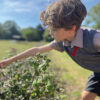The football World Cup may be over, but another great sporting events kicks off in less than two weeks. National Fishing Month (NFM) 2018 – the highlight of the fishing year – begins on 27th July and gives everyone the chance to give angling a go under the guidance of specially-trained experts. And everything is free!
NFM is now in its 26th year of unrivalled success, during which it has helped to introduce hundreds of thousands of people to a lifelong sport and the huge happiness it brings. Millions of anglers have discovered
already that angling takes them to beautiful places to catch wonderful fish, making lots of new friends on the way. It’s both exciting and relaxing, generating huge personal satisfaction though close and informed contact with nature. Most of all, it’s great fun.
This year there are more than 250 events nationwide, listed online at www.nationalfishingmonth.com so there’ll be a participating venue close to everyone. Taking part is simplicity itself – just need to register online and then turn up. Everything will be provided without charge, and most people will experience the ultimate thrill of catching their first fish under the watchful guidance of their coach.
 Everyone who takes part will go home with presents… a NFM ‘goody bag’ containing the ‘Get Into Fishing’ booklet full of information on how to get started and advice on different types of fishing, a log book to make a note of their first catches and a special certificate as a memento of their days free fishing.
Everyone who takes part will go home with presents… a NFM ‘goody bag’ containing the ‘Get Into Fishing’ booklet full of information on how to get started and advice on different types of fishing, a log book to make a note of their first catches and a special certificate as a memento of their days free fishing.
Naidre Werner, Chairman of the Angling Trades Association which organises NFM, commented: ‘July and August really will be focused on angling. There are hundreds of events going on nationwide, beginning with a launch event at The Game Fair at Ragley Hall, near Evesham, Worcestershire (on 27th, 28th and 29th July). National Fishing Month will have its own fly and coarse teaching areas’.
Across the country, leading tackle company supporters such as Daiwa, Dinsmores, Fladen, Middy, Leeda, Pure Fishing and Angling Direct have all donated products and time in support of NFM so that tackle can be used on the bank for coaching and as prizes at events.
Details of events that are scheduled already are listed on the National Fishing Month website at www.nationalfishingmonth.com and can be viewed by entering your postcode. The nearest events and their details will then be shown and you will be able to book a coaching time to suit you.
NATIONAL FISHING MONTH 2018 RUNS BETWEEN 27TH JULY AND 2ND SEPTEMBER.

 gether
gether










